We sent a few rookies hurtling down dangerous singletrack, bounding through an American Ninja Warrior course, and splashing across miles of open ocean. They proved that if you’re willing to work hard, conquer your fears, and maybe don some superhero spandex, anything is possible.
Become a Bro
The quest: go from being a bookish, frail, risk-averse weakling to a badass master of downhill mountain biking.
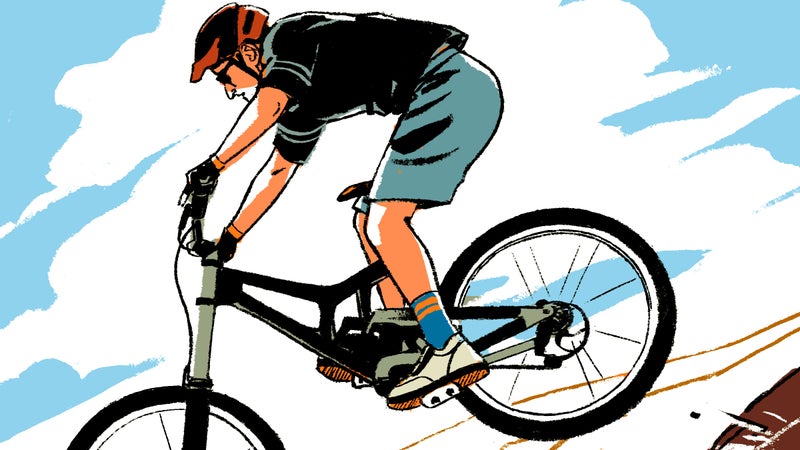
The trouble started right away. “I’ll send you a training plan,” said James Wilson, creator of and onetime coach to downhill world champ Aaron Gwin. My problem stemmed from a simple fact: I have never trained for anything in my life. I avoid physical exertion. But this was no ordinary endeavor. My colleagues at this magazine thought it would be funny to give me eight weeks to become the sort of downhill-obsessed bro I’d often derided. I had been on a mountain bike only a dozen or so times. I needed to get in shape quickly, and Wilson is a revered coach.
But I immediately regretted committing to a training program. There were stretches, exercises, and bike work—every single day. The first morning, the whole thing took nearly 90 minutes, the sort of lengthy stretch I typically reserve for pursuits like reading, eating, and napping. After a few days, I was able to shave 15 minutes from that as it ceased being necessary to Google things like “how to do a Turkish get-up.” But it still ate up more than an hour of my morning. I began to curse Wilson when I woke, and I briefly abandoned my workouts altogether. Which is what brought me to my first lesson: training is useless if you don’t do it.
Watch Senior Editor Jonah Ogles Become a Downhill Hero
So I split the program in half—exercises and weight work one day, bike rides the next. (I still stretched each morning.) After a few weeks, I could reach summits on my local trail system without feeling like a Honda Civic had just rolled over my chest. My legs didn’t turn to rags after the 600-foot climb up the gravel road behind my house. Still, when I actually started riding downhill, I discovered that feeling fit and understanding how to ride twisty singletrack studded with roots, basketball-size rocks, berms, fallen trees, and not-so-fallen trees are very different things. To help, I enlisted Dave Stanton, a marketing guru who spends much of his summer riding gnarly technical trails at New Mexico’s . “Get low and really feel the bike,” Stanton said the first time we rode, reinforcing what Wilson had told me over the phone. On another ride, he encouraged me to hinge at the hips, keep my back straight, and hold my arms in a half push-up instead of squatting over the bike. I learned to keep the bottom bracket in a straight line between the ground and my hips.
By week eight, I was ready for a final test: riding Angel’s Plunge, a course with 1,200 feet of descending. It isn’t the park’s most difficult ride (earlier, Stanton had pointed out a stretch of giant boulders that gave me an instant panic attack), but it’s one of the longest and has all the features I’d been working on—rock gardens, ramps, berms, drops, roots, and a dozen other things that could break my collarbone.
As we headed down, though, I realized that I was in control—the techniques I’d practiced began to work, and I even started having fun. I whooped around turns. I laughed over rocks. I even caught some air. By the time I got to the bottom, my transformation was nearly complete. There was just one thing left to do: pick a dubstep track for my sick helmet-cam footie.
—Jonah Ogles
Embrace the Dark Side
The secret to becoming a better endurance athlete may lie in getting jacked at the gym— even if it’s the last thing you want to do.
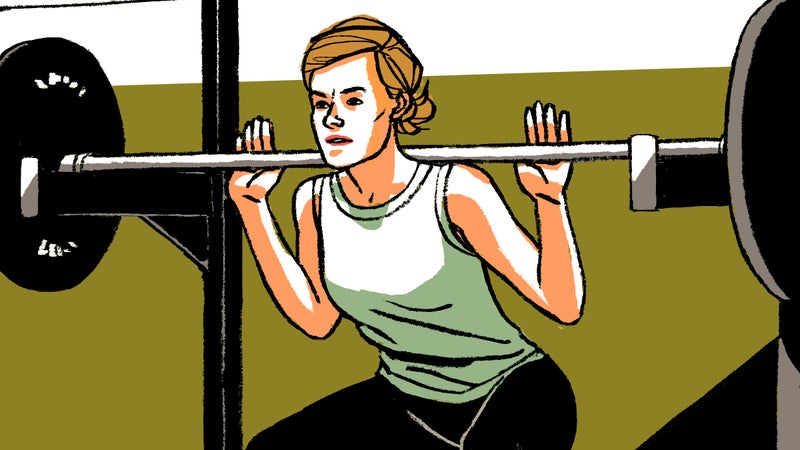
Everything hurt. Like really, really freaking hurt. For a month, I had squatted, deadlifted, and pressed my way to exhaustion so complete that getting out of bed in the morning was an achievement. I’ve run 100 miles, but I’d never been this sore.
When I first heard that training to squat more than my body weight would help me improve as an endurance athlete, I wasn’t sure I could even pick up a 30-pound dumbbell. In my mind, weight lifting was a thing for protein-guzzling meatheads who use words like swole. I’m a five-two, 108-pound runner. Hill repeats are the closest I’ve come to strength training. And like most endurance athletes—and most women—I was terrified of two things: getting bulky and getting hurt.
To assuage my fears, I called ultrarunner , who recently opened a coaching business in Bozeman, Montana, called the , dedicated to training climbers, runners, skiers, and mountain bikers. And a big part of his program is strength work.
On Tuesdays, Wednesdays, and Thursdays, Wolfe had me training very, very hard. Mondays and Fridays were for rest. Weekends I could do the running and climbing that I enjoy most. “You’ll hate me (and hopefully love me a little) by the end of this…,” Wolfe texted. He wasn’t wrong.
For my first workout—a leg session involving jump squats, deadlifts, and, of course, regular squats—I made do with some random kettlebells and a jury-rigged pull-up bar. For my second, I found a community gym full of tattooed dudes in tank tops grunting through bench presses, though I had to ask where the barbells were. Before (and sometimes during) workouts, I watched what felt like hundreds of videos that Wolfe sent to guide me through proper technique—keeping my back straight and making slow, controlled movements.
When I started, I could only squat the 45-pound bar, but I slowly added weight, five or ten pounds every couple of days. After week two, I could do a pull-up. And by week three, I could squat my body weight. Granted, the morning after workouts I could barely walk to the coffee shop without wincing. But I realized that before stepping into a gym, I never quite pushed hard enough and frequently ruined rest days because I was too agitated to take time off. Training to increase my squat strength broke me down to a place where I didn’t really have a choice. Then it built me up stronger.
What impressed me most, though, was how much confidence I gained by making such huge progress in such a brief amount of time—progress that translated to the things I actually love. During my final week of Wolfe’s program, I squatted 135 pounds and led a climb that was many degrees of difficulty beyond what I’d been able to do before. “HOLY FUCK YEA!!,” Wolfe texted when I told him. My uphill running power felt stronger, too.
In the end, I still prefer exercising outside—but if getting swole helps in those pursuits, I’m willing to keep hitting the gym.
—�ѱ������������Ƿɲ�
Embarrass Yourself
One very tall man’s reckless pursuit of balletic grace.
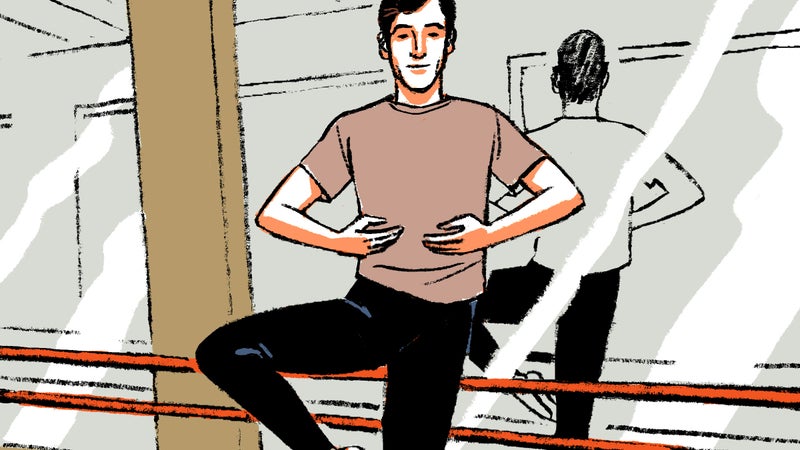
My legs trembled violently as I clutched the back of a chair in my bedroom, trying to polish off another hellish set of plié squats. “So this ballet stuff is a little harder than you thought, huh?” my wife said.
I’ve never claimed to have flexibility or balance. I’m a reasonably athletic six-foot-three and am more comfortable muscling through than using any sort of technique when it comes to my athletic pursuits—climbing, mountain biking, and skiing. So I wasn’t exactly thrilled to spend eight weeks learning ballet to see if it would make me better at them.
A small comfort was that professional athletes, like New York Jets defensive tackle Steve McLendon, do ballet to improve balance, core strength, and flexibility and help prevent injury. The Dallas Cowboys even installed ballet bars in 2014.
To lead me through, I enlisted onetime ballerina and former ���ϳԹ��� staffer Meaghen Brown. The two of us climbing together is a study in opposites: she’s five-two and ascends with graceful precision, and I’m a big brute who lumbers up the wall.
Before we started, we knew that there was no way to turn me into a ballerina. So we focused on a single goal: to master a pirouette, one of the sport’s most iconic moves.
“Doing it well takes a combination of strength, balance, flexibility, and physics,” Meaghen told me. “It should look and feel effortless.” But actually holding my weight up on one foot while making a controlled spin was far from easy. I stretched, practiced the basic positions, and performed innumerable calf raises and lunges. There were days when I woke up and thought that I would never walk again. It was some of the most difficult training I’ve ever done. Though my core got stronger, I constantly felt like I was straining to achieve the sort of controlled, fluid movements I was striving for.
When it came time for my final go at a pirouette, I was successful in that I made it all the way around, but to say it looked good would be a bald-faced lie. I lost track of all the individual elements—the lift, the spin, the landing—and my form broke down quickly.
When I finally climbed back on my bike, I didn’t notice a difference. But the climbing gym was another story. I used to struggle with intermediate V5’s, but during the last week of ballet I found myself climbing a tricky V7. It was a slabby problem full of sloped holds that required a hand-foot match plus a heel hook on the third move, followed by long reaches and delicate balancing acts. Eight weeks ago, I would have relied solely on power and likely failed. This time, as I felt myself about to peel off the wall, I envisioned how a dancer would climb it—moving intentionally, mindful of balance—and finished it cleanly. I was so happy, I thought about doing a little dance. But only thought about it.
—�����ⲹ������Dz�������
Welcome Fear
The best way to beat being scared of confined spaces is to get into a really tight spot.
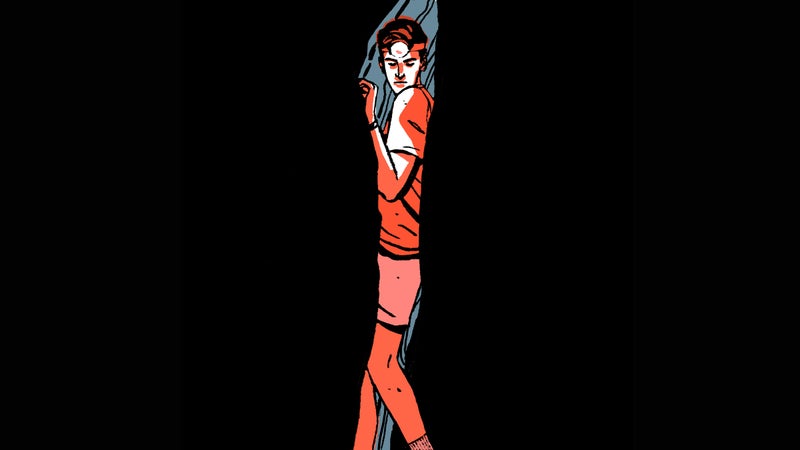
“You’re not claustrophobic, are you?” I turn to my caving partner with a nervous smile, not sure if she’s teasing me or genuinely didn’t get the memo. We’re here—near the very back of the 60-foot-wide, quarter-mile-long main passage of Cottonwood Cave, in southern New Mexico’s Guadalupe Mountains, getting ready to squeeze through a tiny hole in the ground—precisely because I want to conquer my fear.
“I’ll be OK,” I say.
I wasn’t always this way. As a kid, I explored crawl spaces underneath friends’ houses and squeezed into corners of our attic for hide-and-seek. But about three years ago, while taking scuba lessons in the cold waters of Haigh Quarry, outside Chicago, that all changed. On the last dive of my certification class, thirty-something feet down in water so cloudy I could barely see my outstretched hand, I began to panic. Virtually blind and well aware that I couldn’t swim straight to the surface without skipping vital decompression stops, I felt trapped and helpless. It was the first time in my life that I experienced real and utter panic. Soon the mere thought of being stuck in tight places—subways, elevators, caves—was enough to make me break into a full-body sweat.
So when I set out to try and cure myself via eight weeks of cognitive therapy, I was more than a little apprehensive about the end goal of confronting tiny passages, in crushing darkness, located hundreds of feet underground. I consider myself an athletic guy; I’ve done ultramarathons and months-long backpacking expeditions. But conditioning my mind was an entirely new challenge.
So I called , a high-performance-sports psychologist who worked with Felix Baumgartner ahead of his 2012 jump from the stratosphere. Gervais told me that I should make a spectrum list of panic-inducing situations ranging from one (sitting in the middle in the backseat of a car) to ten (getting trapped while deep-sea cave diving). Each day I sat in a quiet room, closed my eyes, and visualized myself in progressively scarier scenarios.
“In your imagination, you master level one. Then you put yourself in level two, and you master that,” said Gervais. “It’s a stepladder approach.”
Imagining, say, that I was standing in a crowded subway (level two) didn’t make me nervous, but as soon as I mentally placed myself back in the cloudy waters of Haigh Quarry (level seven), my heart rate began to rise. Sweat beaded on my forehead, I bounced my legs, and my mouth went dry.
Gervais told me to focus on the minutiae of the experience. “We can only have one new thought at a time,” he explained. “And that one thought could be, ‘Oh, my God, I need to get out of here.’ Or it could be, ‘OK, I’m now turning the nozzle, and then I’ll grab the mouthpiece. OK, now I feel the rubber around my teeth and gums.’ Those are all new and novel thoughts that are task-relevant.”
By the end of week eight, I felt prepared to try Cottonwood Cave. I lowered myself into the narrow void and focused on the dull rattling of loose rocks under my feet; the dewy smell of the stagnant, ancient air; the echoing drip of water in the unseeable distance. And an amazing thing happened: I wasn’t afraid. In fact, I was excited. By concentrating on the tangible elements of my experience, it became not just about worming myself into small spaces, but also an opportunity to experience a place that few ever have. I looked at my caving partner and crawled deeper.
—�±�������ܻ��
Fuel with Failure
Just how well can an avid skier and cyclist do on the American Ninja Warrior Course?
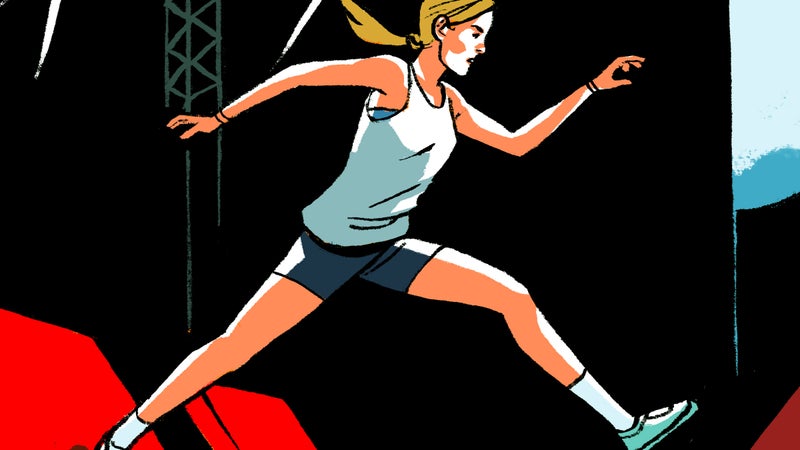
The propeller looked impossibly far away. Ten feet in front of me, an eight-foot-long wooden wing spun slowly beneath a maze of metal scaffolding about 15 feet above a pool in a Las Vegas parking lot. I’d just completed the first obstacle of NBC’s 2016 finals course—five stepping stones that tilted on hinges as runners hopped across them. Now I was supposed to run across a platform, leap onto a small trampoline, and, in a fit of acrobatic grace I doubted I possessed, grab the prop with both arms. Assuming I avoided smashing my teeth against the wood, I then had to grab the rope dangling on the far side of the propeller and swing to a mat inconveniently angled above the water.
I had arrived in Las Vegas less than 24 hours earlier to try my luck on the course as a guest runner, after training for two months. I’m usually on a bike or skis, neither of which hone the skills most critical to succeeding on big obstacle courses; American Ninja Warrior contestants are well-rounded athletes who combine agility, strength, coordination, and superb power-to-weight ratios. I may have quads of steel, but rapidly navigating increasingly difficult man-made obstacles requires a few additional abilities.
One is the grip of an elite climber—last year’s champion, Isaac Caldiero, is among the first to free-solo the Present, a 5.14a route in Utah. Body control, balance, and mental toughness matter a lot, too. The first time I ran a Ninja Warrior–style course, at a facility called MROC in Oceanside, California, my brain was my biggest foe. It’s tough to assess an obstacle without ever having touched it—and to ignore the consequences of a fall. “You need to believe that you can get it right on the first try,” says stuntwoman Jessie Graff, one of the show’s top competitors.
To prepare, I had to develop a more robust arsenal of muscles and skills. I hit up the local climbing gym three times a week to build my upper body, strengthen my hands, and practice problem solving. I squeezed (orange-size balls with rubber finger loops) while procrastinating at my desk. I also signed up for , a fitness program based in Santa Fe that takes “a holistic and mindful approach to the full range of natural human movement abilities.” In practice that translated to a lot of rolling, swinging, and jumping via pull-up bars, balance beams, and exercise balls.
While my grip improved and I could bust out 100 respectable push-ups, I wasn’t feeling particularly ninja-like as I ran toward the propeller. I jumped onto the trampoline, reached for the blade, and missed it by a mile. My run was finished.
Looking like a drowned rat, I walked in shame down the Strip to my hotel. I told myself I could have gone farther if I’d practiced more. But once I got home and resumed riding my bike, I realized that failing was beside the point. The training reminded me that agility, strength, and balance are the building blocks for athletic success—and I don’t have to be a ninja to appreciate that.
—���澱��������������
Go Beyond the Pain
Turns out the only way to get through a long-distance open-ocean swim is to embrace the suffering.
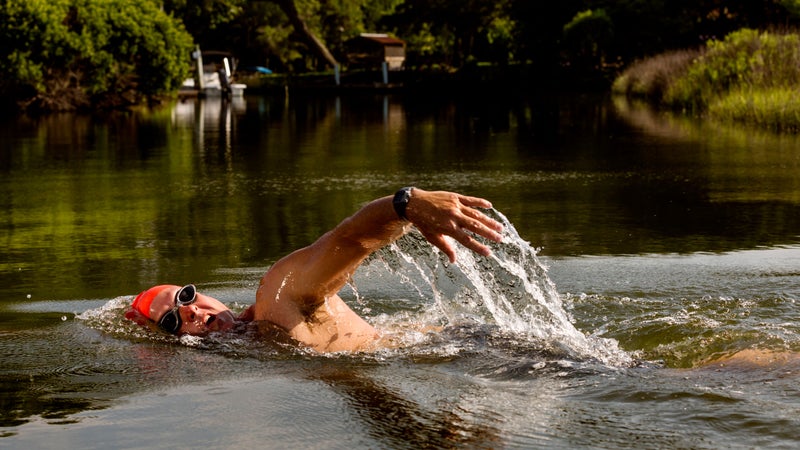
“That guy back there is in last place,” said a race official, pointing just past me at another swimmer in the 10K in Grand Cayman. That’s when it sank in—I was going to miss the three-and-a-half-hour cutoff time.
I was nearly three hours into my first long-distance open-ocean race. My left shoulder was groaning with every stroke, and I had about 30 minutes to swim the remaining 1.2 miles.
Although I was a member of the swim team as a kid, I can count on one hand the number of times I’ve swum for fitness in 30 years. Getting ready for a 6.2-mile race—in just six weeks—seemed like an impossible goal, one that would truly test my body’s limits.
I immediately called Kevin Eslinger, an old friend who trains open-water swimmers in San Diego. “If you go about it smartly and really listen to the feedback your body is giving you,” he said, “you can definitely do it.”
The first two weeks of training in the Intracoastal Waterway, near my home in North Carolina, had me swimming 20 to 30 minutes per session, four days a week, simply to get my joints and body accustomed to the repetitive motions. I felt tired and out of breath as soon as I hit the water, and that was before battling the horseflies constantly trying to enter my ears and nose. But after a few days, my freestyle stroke developed a rhythm. Sometimes I closed my eyes. Other times I’d catch a glimpse of a pelican overhead. Once, a dolphin followed me closely for hundreds of yards.
With the third week of training came the volume. Every third session, I added an additional 15 to 20 minutes. By week six, I was swimming for nearly three hours straight.
I decided to warm up with a one-mile race held two days before the main event. I got swept up in the excitement of the mass start of nearly 1,000 swimmers, went out hard—and never slowed down. I finished 94th out of 931 with a time of 26 minutes 42 seconds. After, more than a little satisfied, I iced my shoulders, drank a beer, and told myself I was ready for the big race.
That seemed true at first. When the starting gun went off, I let the others sprint ahead. For me the 10K race was just about finishing before the aggressive 3.5-hour cutoff. (To put this in perspective, the cutoff for the 5K was 2.5 hours.)
About 40 minutes in, I was feeling good. The water was 85 degrees and crystal clear, and I felt confident enough to spend time watching stingrays glide by. But I swam past the fuel station on the first of four laps, a mistake that left me without a drink or energy gel for more than an hour. By lap three, my left shoulder was throbbing and I couldn’t find my higher gear. It was only when I heard the race official say I was almost dead last that my adrenaline finally kicked in. I started hammering and crossed the finish line just six minutes before the cutoff.
Totally winded and a little off-balance, I stumbled onto the sand and joined the crowd. They’d been waiting for me and the other slackers before beginning the raffle prize drawing. Standing in an oxygen-deprived fog, I thought I heard my name, so I hesitantly approached the stage only to learn that while I’d nearly lost the race, I’d won a round trip ticket back to Grand Cayman in the raffle. A woman leaned in and said, “I guess you’ll have to come back and race again next year.”
—Mark Anders







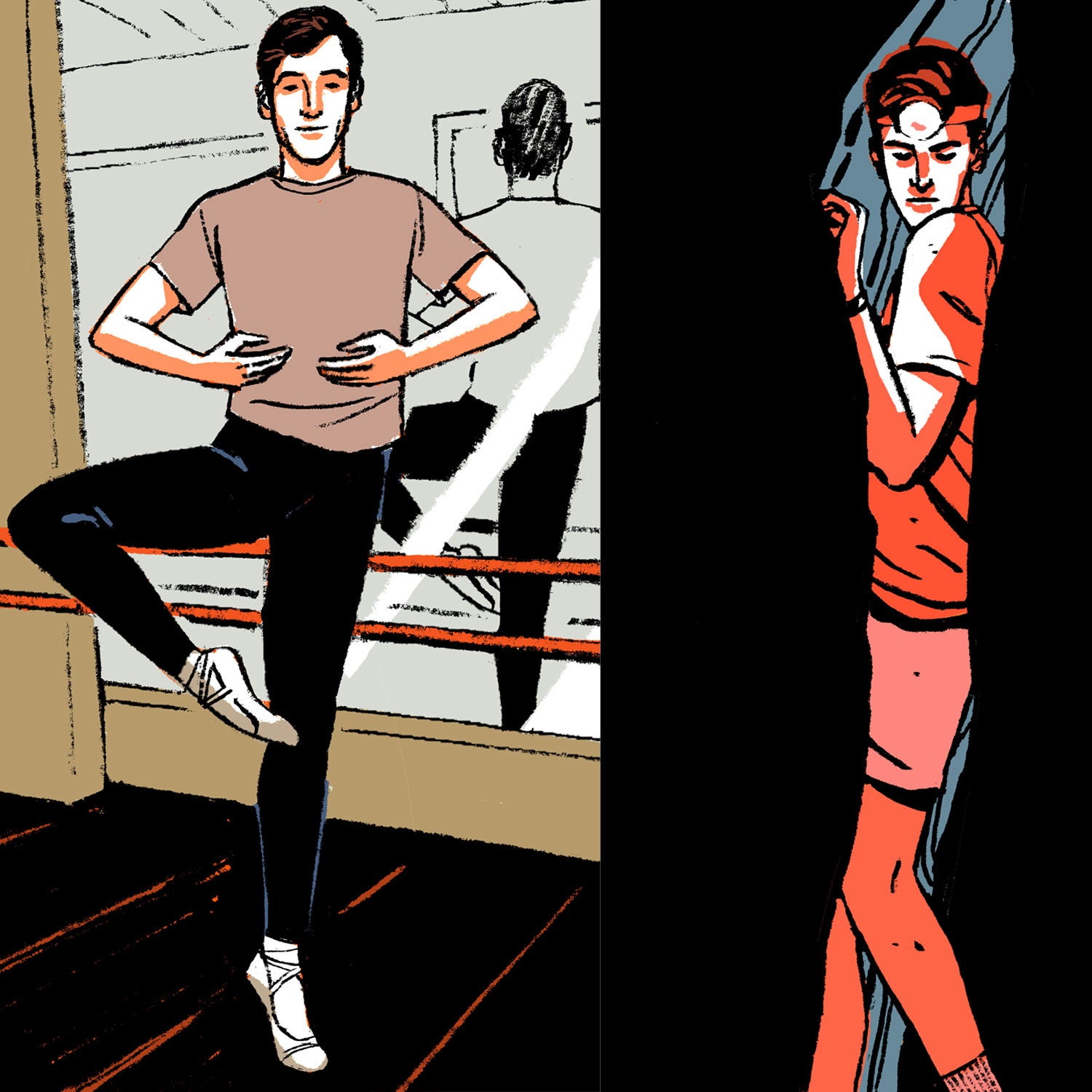
 127 radical tips for total health.
127 radical tips for total health.